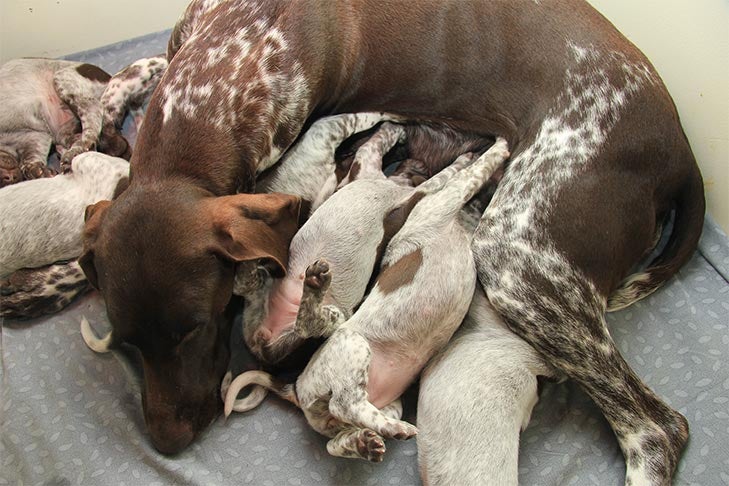
By Hilarie Erb
and Claire A. Wiley, VMD, DACVIM
Executive Director, AKC DNA Program
There is a lot to do when planning a litter, from all of the work that went into your bitch’s show and/or performance career, to achieving all of the appropriate health clearances. The hopeful sire was subject to the same rigorous oversight. After all of this, not much is more disappointing than a breeding that does not result in pregnancy.
Assuming that both the sire and dam are healthy, the most common reason for bitches failing to become pregnant is mistiming. A progesterone blood test is the most accurate tool for predicting the best time to breed. While mother nature knows a lot, and the bitch’s signals should never be ignored, not taking advantage of the technology available with progesterone testing is a mistake. It can be inconvenient to make several visits to the vet during this time, but the knowledge gained is worth it. Most vets must send the samples to a lab, but you may be able to find one in your area who has the equipment needed to analyze the bitch’s blood sample on-site.
Besides giving the best shot at pregnancy, progesterone testing is also necessary should a C-section be necessary or when the bitch is close to term and survival of the puppies, even the bitch herself, might be in question. Dogs do not have a two-week window for safe delivery as humans do.
There are three stages of the female dog’s cycle: proestrus, estrus, and anestrus. The estrus stage, which lasts from 3 – 21 days, with an average of nine, is when the bitch is fertile.
Pay careful attention to signs that your bitch is coming into season. Look for vulval swelling and any discharge. The first progesterone test should be done five or six days from this point, to establish a baseline. If the number is very low, you might wait a few days before the next test, but once it starts moving up it should be tested every other day. One test is not enough, and some bitches reach the ideal number sooner or later than others. Once the level begins to rise steadily, your vet may be able to predict that it will be at the right place in a couple of days.
Ovulation is thought to take place when the level is 5 ng/ml (nanogram per milliliter) and this is a good time for breeding with fresh semen, naturally or by vaginal AI. Though the eggs are not mature at this point, healthy fresh semen will survive in the bitch’s reproductive tract until they are.
Breeding using fresh chilled or surgically inseminated frozen semen should take place later, when the progesterone level is 20s ng/ml. Of course, if this is the case, you are already working with a canine repro specialist who can advise you best.
“It might be useful to have progesterone levels tested on a heat cycle even if no breeding is planned, just to have an idea of how a bitch behaves at any given level. The results are not always consistent from one cycle to another, even with the same bitch. But it might help when planning shipments of semen for future litters,” said Dr. Wiley.
Stud owners should be kept informed with your bitch’s progress. There is plenty of work for them too – they want a successful pregnancy, and for natural breeding or fresh semen AI, they need to plan. They may not be able to drop everything just because your mama-to-be is ready.

